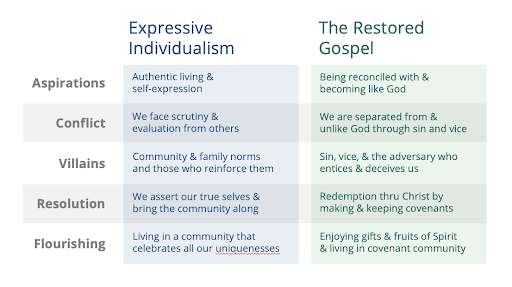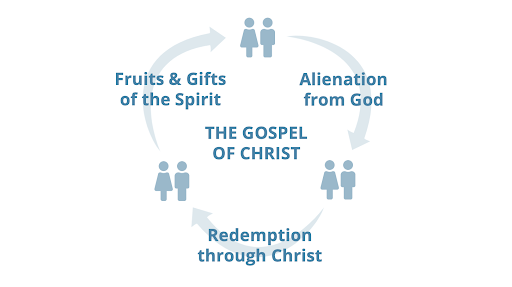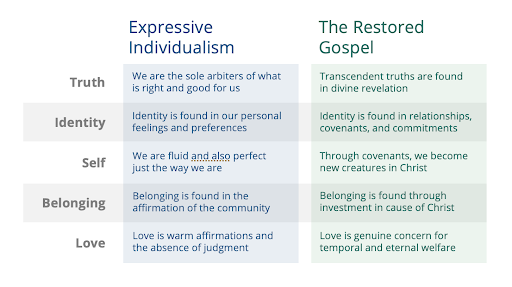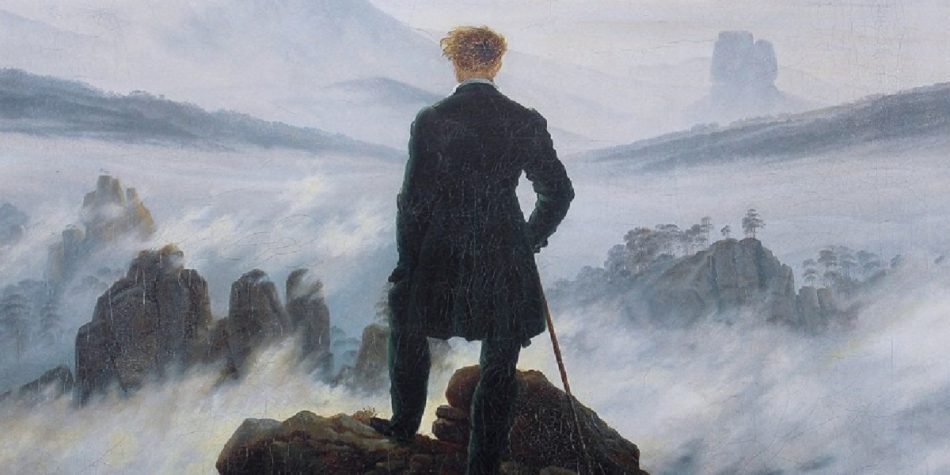This is a slightly modified version of a presentation that was given on June 16, 2022, for the William James Prestigious Lecture series in the Psychology department at BYU-Idaho. The opinions expressed here do not represent the views of the university or the Church.
Introduction
Last fall, I gave a presentation at FAIR about worldviews. For those who don’t know, FAIR is an organization dedicated to developing resources for those who wish to strengthen their convictions in the Restored Gospel. Rather than retread the same ground, I would like to expand on some of the arguments I made there.
Worldviews are passed down through stories. For example, children are not taught that “boogeymen are evil and ought to be feared.” Rather, they are told a story: “One night, little Bobby defied his parent’s wishes and went out into the woods without their supervision. While there, a boogeyman devoured him alive.” The moral universe of the story is inferred, even when not directly stated. “We are storied creatures,” Anderson and his colleagues argue, “responding more readily to narrative than to doctrine.”
Baked into the grammar of our stories are presumptions about the nature of human flourishing and the good life. What does victory look like for the characters? What would give the story a happy ending? What would give the story a tragic ending? In this way, the stories told within a worldview inform not just our beliefs but also the way we feel. Like boogeyman stories in our childhood, our worldview stories shape our emotional reactions to the world on the level of our intuitions — what we love, what we hate, what we fear, and what we trust.
Expressive individualism
Let’s talk first about expressive individualism. Expressive individualism is a worldview that gives self-expression a privileged place among human goods. It sees self-expression as a paramount virtue that undergirds all other virtues. Let’s walk through this worldview story, step by step:
Our highest aspirations. The core assumption of expressive individualism is that nobody can decide what the good life looks like for you except for you. You are the sole arbiter of what is important in life (for yourself), which means that you should prioritize self-discovery and ignore most external prescriptions. The highest aspiration of the expressive individualist is to live authentically, that is, to be able to live out your self-selected priorities and desires.
The conflict. Community and family norms do not always prioritize or privilege individual self-expression. Religion, tradition, culture, family, and peers can all stifle our attempts at self-definition and self-expression, imposing upon us standards and expectations that we did not choose for ourselves.
The villains/antagonists. From this view, community norms or religious precepts that lead people to evaluate our choices hinder personal development. The expressive individualist often sees community norms as an obstacle to human flourishing. And for these reasons, anyone who seeks to strengthen or reinforce such norms is seen as the de facto villain of the expressive individualist worldview.
The story resolution. The expected, hoped-for resolution to this conflict is that we step into and assert our true selves. This may involve conflict and confrontation with those in our lives that seek to impose templates and expectations upon us. The hope, of course, is that our family and community will relinquish their expectations of us and honor our choices.
Human flourishing. From the standpoint of expressive individualism, human flourishing is defined as living in a community that celebrates all of our uniquenesses and differences—a community that doesn’t evaluate our choices or have an agenda for our lives.
We can see examples of this story template throughout our modern media. The stories often follow this three-act form:
1. The protagonist finds herself in a community of oppressive norms and expectations. These norms conflict with his or her natural inclinations, inner desires, and personal aspirations.
2. Next, the protagonist breaks free of the constraints of his or her family, community, or faith. He or she embraces authenticity and self-expression.
3. Finally, the protagonist strives to remake the community’s norms to be more accommodating. The story always ends with an attempt to bring the community around.

We have all seen movies or read books that follow this template. For just one example, we have How to Train Your Dragon, in which Hiccup is unique. He violates the norms and expectations of his community by befriending a dragon. In so doing, he disappoints the community. But in the third act, the community rallies around Hiccup. Soon they are all training dragons. This is the expressive individualist story—and before anyone accuses me of disparaging the movie, it’s among my favorite films. Other examples include Mulan, Frozen, October Sky, and Footloose. I have here just a few examples of hundreds where the central message of the movie is to “be true to yourself.”
The Gospel of Jesus Christ
So let’s do a contrast. What is the worldview story that is handed to us by the Restored Gospel of Jesus Christ?
Our highest aspirations. In the worldview story of the Gospel, the chief aspiration of the protagonist of the story is to return to God and to become as He is. Put in other words, our goal is salvation (becoming reconciled with God) and exaltation (becoming like God).
The conflict. However, the more we aspire to the presence of God, the more we come to recognize that we have been alienated from God through sin and transgression. Our weaknesses and rebellions separate us from God and make us unlike Him.
The villains/antagonists. The “villains” of this worldview include sin and vice. In addition to sin and vice, the adversary (e.g., Satan or Lucifer) continually entices us to do evil and to draw us away from the truths of God through deceptions.
The story resolution. We seek reconciliation with God through the merits and grace of Christ. Covenants and ordinances arm us with spiritual power against the adversary and his deceptions. Through these, we qualify to enjoy the presence of God in this life and to return and dwell with Him in the next.
Human flourishing. In the Gospel worldview, the “good life” involves enjoying the promise of the Holy Spirit and living in a covenant community where God’s laws and teachings are normative (Zion). This includes a life centered on temple worship. In this temple-centered covenant community, we hope to enjoy both the gifts and fruits of the Spirit.

The worldview story of the Gospel of Jesus Christ can also be mapped as a three-act story:
1. The protagonist is alienated from God. Our sinful rebellions separate us from God’s presence and keep us from becoming like Him.
2. The protagonist seeks redemption through Christ. We seek redemption through Christ and become like God by making and keeping covenants and participating in sacred ordinances.
3. The protagonist lays hold upon the fruits and gifts of the Spirit. The gifts of the Spirit (gift of tongues, gift of discernment, and so on) help us to minister to others and build the Kingdom of God. The fruits of the Spirit (love, patience, humility, etc.) change our natures so that we can become more like Christ, whose name we now bear.

It’s harder to find popular media examples that resemble this story template. The closest I’ve ever seen from the Disney side of things is The Emperor’s New Groove and the movie Cars, both of which offer us a secularized version of this redemption arc.
Worldviews present the world differently
Worldviews present or unveil the world to us. Think of it like driving a car or walking. Driving a car presents the grocery store as “10 minutes away,” whereas walking presents the grocery store as “forty-five minutes away.” A path that is a shortcut when you are on foot is presented as impassible when you are driving. The world simply shows up differently depending on whether you are driving or walking.
The highest aspiration of the expressive individualist is to live authentically.
Diverging views on truth
Let’s start with truth. I use the word “truth” in this context to refer generally to what we consider to be right and good. In our search for what is right and good, expressive individualism directs us inwards rather than outwards. The assumption is that we are the ultimate arbiters of what is right, good, and true for us. In its extremes, expressive individualism tends to dismiss the importance of external guides or transcendence truths entirely in favor of personal, subjective values and preferences. For a poignant example of this, a Latter-day Saint therapist (who I will keep anonymous) shared this interesting statement:
We live in a culture where we are taught to rely on external authority for direction … Instead of looking outward, I want you to look inside of yourself to find how you feel and what you want. When you are true to yourself, you honor your personal authority. … You are the ultimate authority in your own life.
From a clinical perspective, it might make a lot of sense to help struggling clients feel more empowered in their lives. But without that clinical context, this is expressive individualism distilled into its purest form: You are the ultimate authority in your life. Turn away from and perhaps even reject external guides. Consult your feelings and your wants—therein lies what is true and good for you. From this view, because the ultimate goal is being true to yourself, living by values or standards that don’t arise from your own self-chosen preferences is a stifling distraction from our journey of self-discovery and self-expression.
In contrast, in the Gospel worldview, there are transcendent truths, and they are found in divine revelation. This can include scripture, teachings of modern prophets, and the influence of the Holy Spirit. It is true that we sometimes talk about consulting our feelings within the Church, but it is usually in the context of seeking truth from a higher source than ourselves—it is about consulting God and seeking revelation from Him. We need guides beyond ourselves. President Uchtdorf, two conferences ago, shared this fascinating story:
There is an oft-repeated theory that people who are lost walk in circles. Not long ago, scientists at the Max Planck Institute for Biological Cybernetics tested that theory. … The scientists concluded, “People really [do] walk in circles when they do not have reliable cues to their walking direction.” When questioned afterwards, some participants self-confidently claimed that they had not deviated in the slightest. Despite their high confidence, GPS data showed that they walked in loops as tight as 20 meters in diameter. Whatever the cause, it is human nature: without reliable landmarks, we drift off course.
In other words, we need external landmarks—something beyond ourselves—to see truthfully. When it comes to determining what is right, good, just, or true, expressive individualism draws our attention away from external benchmarks and towards inner feelings and personal desires— that is, to look inwards. The Gospel invites us to instead look outwards and upwards when searching for ultimate truth and what is right and good, like sailors using a sextant to consult the stars to chart their bearing.
Diverging views on identity
Next, let’s look at identity. Who are you? What makes you you? The worldview of expressive individualism sees identity—like truth—as stemming forth from personal feelings, something that we discover by looking “inwards.” In this view, our identities are defined by the contents of our minds—by our thoughts, desires, inclinations, etc. To discover yourself in this worldview, you must look inside of yourself and figure out what you want and what you feel.
To discover yourself in this worldview, you must look inside of yourself and figure out what you want and what you feel.
You might even go so far as to say that our desires and passions do not necessarily come from inside of us at all but are often things we absorb and are enculturated into by the communities we most closely affiliate with. The social psychologists Bavel and Packer conducted research that showed that the more people identified as a Southerner, the more they expressed preferences for Southern food. “As we’d predicted,” they explained, “people’s degree of identification with the South was clearly associated with a preference for Southern cuisine. It wasn’t enough to come from the South—it was identification with the South that mattered when it came to food preferences.” And salience matters—by reminding people that they are from the South, they could increase the likelihood that they’ll express preferences for Southern food.
In short, preferences and values that individuals might see as coming from within might be heavily influenced by the communities we identify with. What some describe as a journey of pure self-discovery and self-expression may often—in reality—simply be disaffiliation and disaffection with one community and a new affiliation with a different one, a subsequent shift in the identities those communities constitute for us. In other words, in their efforts to “be themselves” and to throw off the expectations of their family and community, many youth find themselves enculturated into different communities of norms. They may absorb and conform to the shared values of the new community—all the while believing they are enacting desires and preferences that flowed from their own inner self.

I believe this is also partly why many church leaders have urged us to prioritize our identity as children of God and covenant members of the Church. President Nelson recently shared on social media:
“Labels can be fun and indicate your support for any number of positive things. But if any label replaces your most important identifiers, the results can be spiritually suffocating. I believe that if the Lord were speaking to you directly, the first thing He would make sure you understand is your true identity. My dear friends, you are literally spirit children of God.
No identifier should displace, replace, or take priority over these three enduring designations:
- Child of God
- Child of the covenant
- Disciple of Jesus Christ
Any identifier that is not compatible with those three basic designations will ultimately let you down. Make no mistake about it: Your potential is divine. With your diligent seeking, God will give you glimpses of who you may become.”
Diverging views on self
Next, let’s talk about the self. A common maxim among expressive individualists is that we are perfect just the way we are. Another seemingly contradictory maxim is that individuals are fluid and should be honored in their various and changing self-constructions. Together, it looks like this: your preferences are yours, and they are allowed to evolve, but however they evolve, you are perfect and complete just as you are. From a psychological point of view, coming to accept changing and fluid preferences is probably a good thing. However, because expressive individualism wraps our identity around those changing preferences, this means our journey of self-discovery is never complete.
This fluidity of self is one reason why some argue that we should relax norms against divorce—people change, some argue, and we cannot expect them to maintain commitments long after their preferences and tastes have evolved beyond those commitments. A friend of mine, in the midst of a divorce (initiated by his wife), was told by his wife, “Do you want to stand between me and the truest version of myself?” She was not the same person, she believed, and so should not be bound by the promises a different version of her had made.
I would argue that the gospel message is also about change, but of a different sort: through making and keeping covenants, we can become transformed as people. We can become new people in Christ. This involves anchoring ourselves into commitments that transcend our fickle preferences and tastes and using those commitments as a launching pad for becoming better, holier people.
This truth lies at the core of the Christian message. The Savior taught, “If any man will come after me, let him deny himself, and take up his cross daily, and follow me. For whosoever will save his life shall lose it: but whosoever will lose his life for my sake, the same shall save it” (Luke 9:23-24). As Alma the Younger put it immediately after his conversion:
Marvel not that all mankind, yea, men and women, all nations, kindreds, tongues, and people, must be born again; yea, born of God, changed from their carnal and fallen state to a state of righteousness, being redeemed of God, becoming his sons and daughters; And thus they become new creatures (Mosiah 27:25-26).
In short, genuine, lasting conversion involves changing our values and priorities so that they more closely resemble God’s values and priorities. It involves not self-creation but allowing God to recreate us in His image. I sometimes tell my students that if we could, right now, peer into the celestial world and see the life that God lives, it might not look so idyllic to us. In fact, we might recoil and say, “That looks really hard. It doesn’t quite jive with what I want.” God’s response, of course, would be that He intends to make us the kind of people who do want that, who, in fact, willingly choose that over everything else. Elder Neal A. Maxwell taught:
So many of us are kept from eventual consecration because we mistakenly think that, somehow, by letting our will be swallowed up in the will of God, we lose our individuality (see Mosiah 15:7). What we are really worried about, of course, is not giving up self, but selfish things—like our roles, our time, our preeminence, and our possessions. No wonder we are instructed by the Savior to lose ourselves (see Luke 9:24). He is only asking us to lose the old self in order to find the new self. It is not a question of one’s losing identity but of finding his true identity! Ironically, so many people already lose themselves anyway in their consuming hobbies and preoccupations but with far, far lesser things.
In contrast with expressive individualism, the worldview story of the Gospel offers something far more valuable than mere liberation from norms, templates, and “oughts.” It involves liberation from sin, pride, self-concern, and enmity. Self-expression and “liberation” from norms lose their luster when we realize that, in the end, we are merely complying with the norms and expectations of a different community or perhaps the whims of popular culture. In contrast, the worldview story of the Gospel promises transformation and redemption.
God loves us as we are but does not intend to let us stay that way, as prophets have reiterated. The restored Gospel promises us reconciliation with God, a new name (the name of Christ), a new identity (covenant disciples of Christ), and a new person (remade in the image of Christ). This is what the journey symbolized in the Holy Temple is all about: becoming new people with a new name, identity, characteristics, and purpose. And the temple centers our attention on our eternal identities, bound up in relationships, duties, and responsibilities that precede this life and which will extend beyond this life. These eternal identities are far more elevating and enduring than the ephemeral features of the “psychological self” promoted by expressive individualism.
Diverging views on belonging
Next, let’s address belonging. Expressive individualists often assume that we don’t fully belong to a community until we can violate all of its norms without feeling any self-consciousness for doing so—and in fact, have our norm-violating choices honored and celebrated by the community. This means that for expressive individualists, strong community norms often show up as threats to belonging. Those who love tattoos might feel threatened by community norms within the Church that discourage tattoos. Those who drink coffee might feel like they belong less in a Church where drinking coffee is discouraged. Those who have no desire to bear or raise children might feel excluded in a community that celebrates families.
In other words, from an expressive individualist point of view, we often get a sense of belonging to whatever degree the community wraps its norms around our self-expressive activities and our other social identities. I regularly see others assert that we cannot belong to a community until the distinctive norms of the community have been dismantled and replaced with less restrictive norms. There is a tendency to assume that high-demand faiths cannot facilitate belonging without demanding less.
However, strong communities have a shared vision, a set of shared values, and a set of shared norms that distinguish them from the broader civic community. Without those, or with only weak versions of those, we barely have a community at all. Zion is a community that is inclusive—it is a place where people of all races, nationalities, backgrounds, experiences, or sexual orientations, can find a place to belong. Zion is also a place where God’s laws and teachings have been elevated to shared values and community norms. Unless you embrace expressive individualism, there is no contradiction here. This is because genuine belonging is found in part through embracing a common cause that extends beyond ourselves.
Within the Church, that common cause is the gathering of Israel and the building of Zion. This involves promoting norms of righteous living. The Lord taught, “Zion cannot be built up unless it is by the principles of the law of the celestial kingdom; otherwise, I cannot receive her unto myself.” It also means supporting norms of love, compassion, and inclusion. As Paul expressed it: “For as many of you as have been baptized into Christ have put on Christ. There is neither Jew nor Greek, there is neither bond nor free, there is neither male nor female: for ye are all one in Christ Jesus.” I love the way that our own Ben Pacini has put it:
We will get nowhere in our efforts to build belonging if those efforts are not built in conformity with eternal law. Just as happiness and love most often arise naturally from other pursuits rather than a direct conquest, belonging is most often not the product of striving for belonging—but rather flows naturally from discipleship, repentance, and dedication in building Zion.
To any who are looking to improve the community and belongingness of any group—I say that we will only make progress insofar as our solutions come in conformity to the eternal laws that govern healthy, thriving, heart-knit communities.
Put differently, belonging comes not by making our communities orbit our self-centered pursuits but by being converted to a vision that is grander than ourselves. That is, by internalizing the shared mission and values of the community and seeking—together—to implement that shared vision. Observe the way the classic primary song describes belonging and how we achieve belonging in the Church:
I belong to The Church of Jesus Christ of Latter-day Saints.
I know who I am. I know God’s plan. I’ll follow him in faith.I believe in the Savior, Jesus Christ. I’ll honor his name.
I’ll do what is right; I’ll follow his light. His truth I will proclaim.
Notice how this “belonging” carries with it transcendent truths, values, and commitments. It is His truths we are to proclaim, not our “own” truths. As a matter of natural consequence, those who aren’t “all-in” on those commitments, so to speak, might struggle to feel the same degree of belonging in a community that elevates those ideals, but we cannot facilitate a sense of belonging in church and at our university by weakening or dismantling our distinctive norms. The less there is a common cause that unites us, the less anyone will feel that genuine, deep sense of belonging. We can best facilitate that sense of belonging by encouraging and facilitating discipleship and involving others in the common project of gathering Israel, building Zion, and covenant living.
Diverging views on love
Finally, let’s talk about love. From the viewpoint of expressive individualism, love is often seen as warm affirmations and an absence of judgment. In this view, love means celebrating uniquenesses and differences, encouraging others to live out their differences, and facilitating that in whatever ways we can. For those steeped in expressive individualism, when parents, friends, teachers, or Church leaders evaluate someone’s choices in light of the Restored Gospel and the covenants they have made, they are not providing “unconditional love.”
“The tightest cords of bondage are those we are unaware of.” – James Falconer
The Celestial kingdom is your goal, and what you have decided will make you happy. You are deciding you have the authority to say that … you know what will make your neighbor happier than your neighbor knows, is Satan’s plan. … If you’re not respecting other’s personal authority for their life … and trusting that their truth about them is as valid and correct as your truth about you, you’re not actually loving anyone.
Notice the expressive individualist assumptions that saturate this comment: nobody but you gets to decide what’s right or good for you. Anyone else who claims to know what you should do is judging and therefore not loving—because love and moral discernment are seen as thoroughly incompatible. Love and a quasi-moral-relativism become wrapped up and viewed as one and the same.
From the perspective of the Gospel worldview, love is a genuine concern for the spiritual and temporal welfare of others and can feature a wealth of moral discernment. Joseph Smith taught, “Our heavenly Father is more liberal in His views, and boundless in His mercies and blessings, than we are ready to believe or receive; and at the same time … more ready to detect in every false way, than we are apt to suppose Him to be.”(p. 257)
In short, many seem to believe that loving like Christ means learning to overlook sin. However, Christ did not and does not overlook sin, nor does He ask us to either. But this does not necessarily lead to self-righteous judgmentalism. Self-righteous judgmentalism is a form of pride, and instead of puffing us up with pride, truly becoming “ready to detect in every false way” makes us humble. This is because we recognize just as well our own fallenness and complete dependence on the merits of Christ. In other words, we become most like Christ not by blinding ourselves to sin but by seeing it more clearly. And that means I stop making excuses for the various ways I alienate myself from God.
As Joseph Smith further taught: “The nearer we get to our heavenly Father, the more we are disposed to look with compassion on perishing souls; we feel that we want to take them upon our shoulders, and cast their sins behind our backs.”(p. 241) We must teach in word and deed that God loves everyone, no matter how far we have wandered. It is precisely because God loves us that He wants to draw us back onto the straight and narrow path that leads us to Eternal Life. As Elder Holland has astutely noted:
Christlike love is the greatest need we have on this planet in part because righteousness was always supposed to accompany it. So if love is to be our watchword, as it must be, then by the word of Him who is love personified, we must forsake transgression and any hint of advocacy for it in others. Jesus clearly understood what many in our modern culture seem to forget: that there is a crucial difference between the commandment to forgive sin (which He had an infinite capacity to do) and the warning against condoning it (which He never ever did even once).
Striking this balance, I believe, involves rejecting the many counterfeits of divine love, including those handed to us by expressive individualism. There are errors in two directions here—we can err towards condoning the sin or towards condemning the person. Christlike love is neither. Instead, it is discerning. It involves being clear-eyed about both the perils of sin and the divine potential of every individual.

Detecting the invisible worldview traps
Why should we examine our worldviews? If the answer to this is not obvious already, it is because worldviews are influencing even our most rudimentary judgments, decisions, and experiences. In short, worldviews influence how we experience the demands of our faith. If our experiences with faith are being heavily influenced by worldviews we have absorbed from our surrounding culture, basic concepts like truth, identity, self, belonging, and love might show up differently to us than it does to our peers in the Church or even its leaders. We can fall prey, in essence, to traps in our thinking that are set and sprung only within the context of certain worldviews. BYU professor James Faulconer explains it this way:
The tightest cords of bondage are those we are unaware of. … We are most in danger of this particular bondage when what we think or do seems “perfectly natural” or “perfectly reasonable.” The things that we think are beyond question are the very things that can most easily deceive us to the point of bondage.
For those who seek to maintain faith and conviction in the Restored Gospel—but who are unwittingly under the influence of worldviews that are at odds with it—those worldviews can serve as a sort of “bondage” that keeps us from seeing their way out of challenges to our faith. Anderson and his colleagues put it this way: “When one wears a distorted set of worldview glasses, nothing looks right, and life cannot be lived rightly.” In other words, when we are wearing smudged worldview lenses, or perhaps the wrong lenses entirely, the Restored Gospel will always look odd or in tension with one’s real (but perhaps unacknowledged) convictions. Sanford and Wilkens explain that our deepest questions can often be informed by “hidden worldviews” that sneak into our thinking and shape those convictions:
It is not the worldviews that begin as theories or intellectual systems that mold the lives and beliefs of most people. Instead, the most powerful influences come from worldviews that emerge from culture. They are all around us, but are so deeply embedded in culture that we don’t see them. In other words, these worldviews are hidden in plain sight. … Because of their stealthy nature, these worldviews find their way behind the church doors, mixed in with Christian ideas and sometimes identified as Christian positions.
In other words, like the “mists of darkness” Lehi saw in his dream, undetected worldview influences can cloud our understanding of central church teachings. And this makes it imperative that Latter-day Saints who are navigating the murky waters of the latter days become aware of the competing worldview stories that are vying for primacy in our lives.
I want to share my witness of the Restored Gospel and the powerful story it tells about who we are and where we are going. In this story, our highest aspiration is to return to and become like God. Each and every one of us has been alienated from God through sin. Through Christ, we can find redemption and reconciliation. And the end, the goal, the telos of all of this — at least in the here and now — is to enjoy the fruits and gifts of the Spirit in our day-to-day lives and salvation and exaltation in the life to come. I want to share my witness of the Savior and His role in this story. We like to think of ourselves as the protagonists of the Gospel story, but the hero of this story is and always will be Him.
















